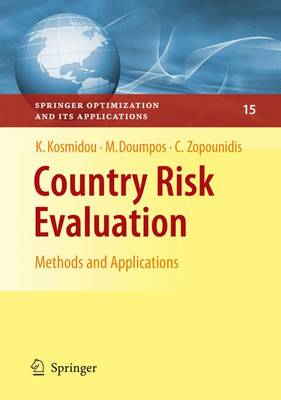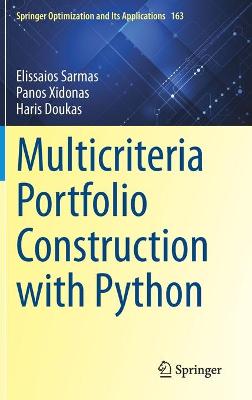Springer Optimization and Its Applications
3 primary works
Book 15
Country Risk Evaluation
by Kyriaki Kosmidou, Michael Doumpos, and Constantin Zopounidis
Financial globalization has increased the significance of methods used in the evaluation of country risk, one of the major research topics in economics and finance. Written by experts in the fields of multicriteria methodology, credit risk assessment, operations research, and financial management, this book develops a comprehensive framework for evaluating models based on several classification techniques that emerge from different theoretical directions. This book compares different statistical and data mining techniques, noting the advantages of each method, and introduces new multicriteria methodologies that are important to country risk modeling.
This work is a useful toolkit for economists, financial managers, bank managers, operations researchers, management scientists, and risk analysts. Moreover, the book can also be used as a supplementary textbook for graduate courses in finance and financial risk management.
Book 69
Multicriteria Portfolio Management
by Panos Xidonas, George Mavrotas, Theodore Krintas, John Psarras, and Constantin Zopounidis
Book 163
Multicriteria Portfolio Construction with Python
by Elissaios Sarmas, Panos Xidonas, and Haris Doukas
This book covers topics in portfolio management and multicriteria decision analysis (MCDA), presenting a transparent and unified methodology for the portfolio construction process. The most important feature of the book includes the proposed methodological framework that integrates two individual subsystems, the portfolio selection subsystem and the portfolio optimization subsystem. An additional highlight of the book includes the detailed, step-by-step implementation of the proposed multicriteria algorithms in Python. The implementation is presented in detail; each step is elaborately described, from the input of the data to the extraction of the results. Algorithms are organized into small cells of code, accompanied by targeted remarks and comments, in order to help the reader to fully understand their mechanics. Readers are provided with a link to access the source code through GitHub.
This Work may also be considered as a reference which presents the state-of-art research on portfolio construction with multiple and complex investment objectives and constraints. The book consists of eight chapters. A brief introduction is provided in Chapter 1. The fundamental issues of modern portfolio theory are discussed in Chapter 2. In Chapter 3, the various multicriteria decision aid methods, either discrete or continuous, are concisely described. In Chapter 4, a comprehensive review of the published literature in the field of multicriteria portfolio management is considered. In Chapter 5, an integrated and original multicriteria portfolio construction methodology is developed. Chapter 6 presents the web-based information system, in which the suggested methodological framework has been implemented. In Chapter 7, the experimental application of the proposed methodology is discussed and in Chapter 8, the authors provide overall conclusions.The readership of the book aims to be a diverse group, including fund managers, risk managers, investment advisors, bankers, private investors, analytics scientists, operations researchers scientists, and computer engineers, to name just several. Portions of the book may be used as instructional for either advanced undergraduate or post-graduate courses in investment analysis, portfolio engineering, decision science, computer science, or financial engineering.


